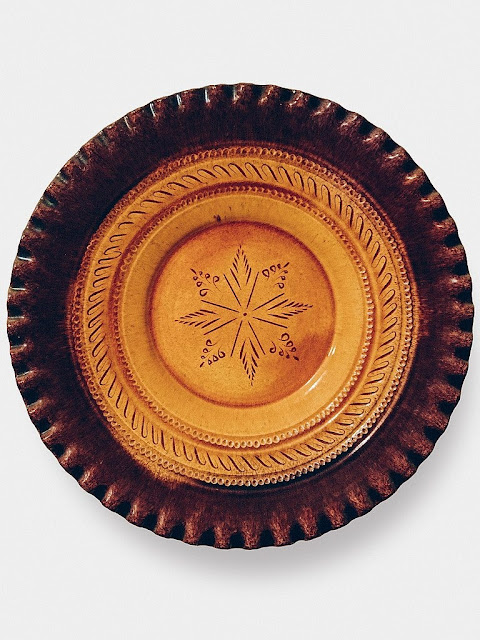Polikarps Čerņavskis — The master of the Latgalian Ceramics
The 1957 Silajāņi Ceramics exhibition in Rīga, organized by the Latgalian art historian Jānis Pujāts, opened several new talented ceramist names for the wider audiences. The 34-year-old Polikarps Čerņavskis was among the ceramists who presented their traditionally made Latgalian ceramic wares.
The way of Čerņavskis to this exhibition was long and hard-fought. During World War II, he was drafted into the Nazi German army, and after the war, he was sent to a filtration camp in Kutaisi. During the post-war period, the ceramists had no sympathy from the Soviet government. All the rural population had to join the collective farms, known as kolkhoz. Ceramists were seen as rebels who went against the collective ideology of Communism. The government used different oppressive methods — gave less land to ceramists and raised extra high taxes for their sales of wares in the markets.
 |
| A decorative plate from private collection made by the famous Latgalian ceramicist Polikarps Čerņavskis. Source: Wikipedia Commons. |
Despite all these obstacles, his passion for this craft did not fade away, and Čerņavskis continued to work on improving his skill. He had such passion for ceramics in his DNA since his godfather was another famous name in Latgalian art history — Polikarps Vilcāns. The godfather became his teacher, and they often worked side by side in the workshop, creating wares for sale. Čerņavskis embodied many of his godfather’s qualities, but eventually, he found his style and type of wares that became his trademark works.
Outside of creating wares that traditionally were commonly used in the everyday life, Čerņavskis also continued the tradition of the finest Latgalian masters. He began to work on the creation of large candelabras, glazed in a variety of bright colors. The process of creating and burning a candelabra with five, seven, or more sticks was a very challenging and physically demanding task. Čerņavskis excelled at this work, and many local art historians considered the Latgalian candelabras as the peak of Latgalian ceramics.
The 1957 Silajāņi Ceramics exhibition became the first breaking point in the relationships between the Soviet government and Latgalian ceramists. Čerņavskis was among the frontrunners in the long process of convincing the politicians that Latgalian ceramists can create more than just wares for everyday use — they are able to create artworks, and they should be considered artists, not some rebels or enemies of the state. The recognition was not instant, but within the next decade, the attitude from government was less hostile.
After Čerņavskis became a member of the Artist’s Union of Latvia in 1959, his works became more appreciated and were regularly selected for display at the various art exhibitions around the Soviet Union. His ceramic wares were also selected for the exhibitions, that were held abroad — Germany, Poland, Romania, and other countries. The masters of Latgalian ceramics began to earn recognition, and instead of making the wares for mass production, Čerņavskis had a chance to work on individual orders.
In the production of wares, Čerņavskis kept the traditional Latgalian methods alive. Instead of using a liquid glaze, he used the dry one, which is way more harmful to health, but such a method could present the most unexpected variety of colors in the process of burning the wares. Of course, the ceramist knew the color the specific oxide would bring, but the mix of different dry oxides could present some truly beautiful colorwork.
In the early 1980s, the old master moved his workshop to the Latgalian small town of Preiļi. He lived and worked there until he died in 1997. Fortunately, unlike most of the Latgalian ceramists who never saw any successors of their craft, the family of Čerņavskis keeps the tradition alive, and the workshop is still buzzing. Most of the Latgalian ceramist families gave up the craft after the sale of wares saw a decline, losing the competition against the mass production of factories. The children of Čerņavskis embodied their love towards this craft, and they turned the workshop of their father into the house museum that is open to visitors up to this day.
The impact Polikarps Čerņavskis did on the development and popularization of Latgalian ceramics will always keep him highly regarded in the hierarchy of Latgalian artists. The ceramist craft is an important part of the cultural code of this Latvian region, and Čerņavskis impact cannot be measured by numbers or any other metrics. His impact has a timeless value.
For more history content, subscribe to our YouTube channel!
Comments
Post a Comment